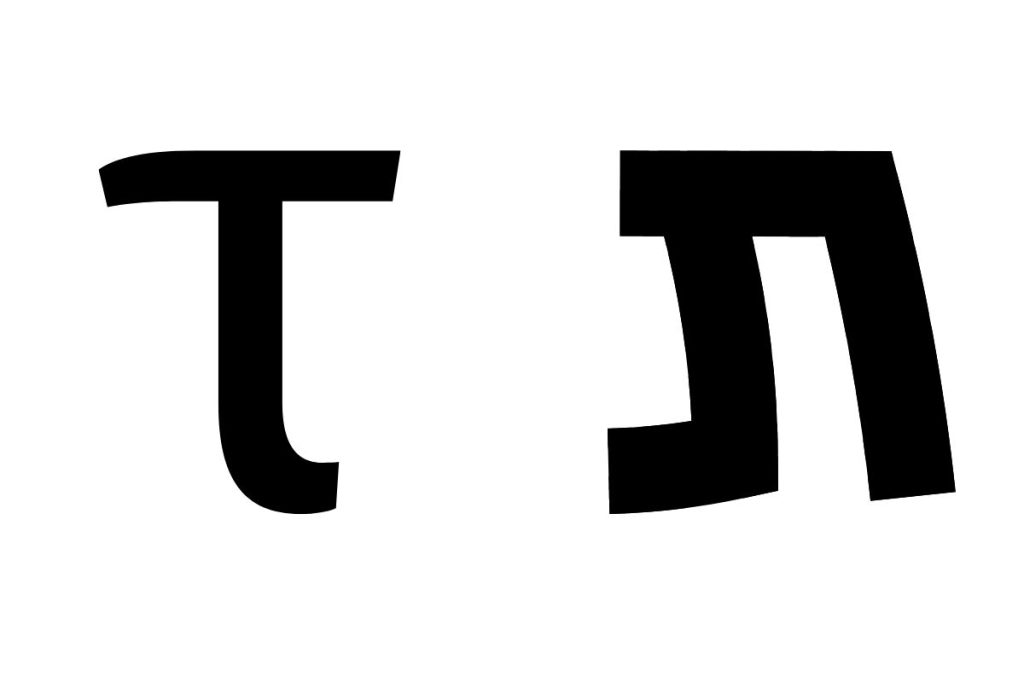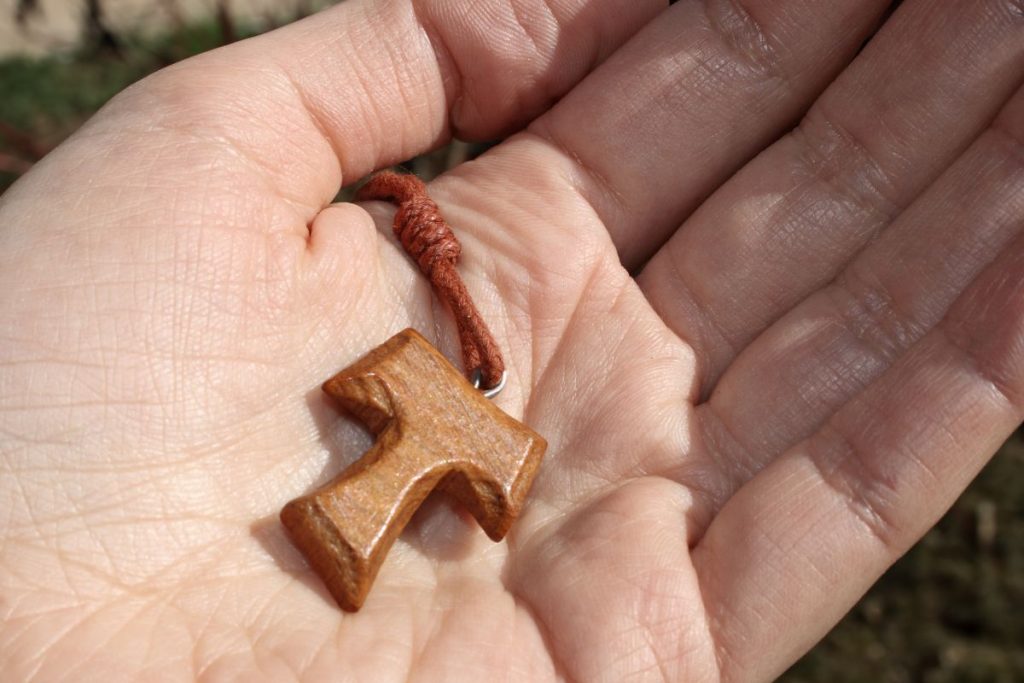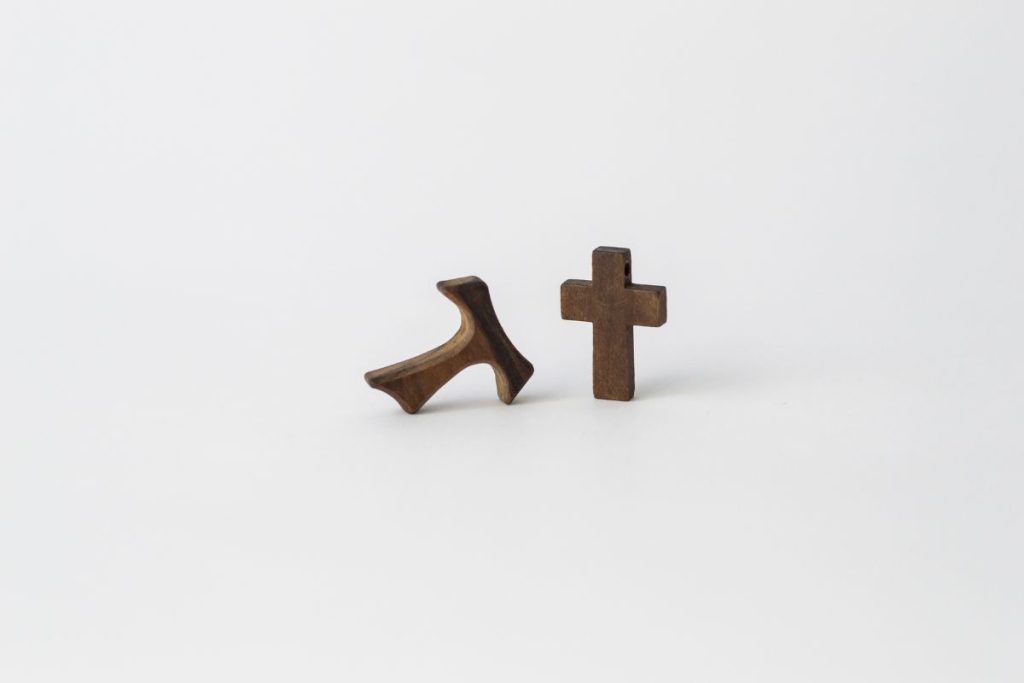The tau cross is a Christian cross shaped like the Greek letter Tau (T). It is also known as Saint Anthony's cross or Franciscan tau cross. In the early Christian Church, people used the tau cross to symbolize the cross on which Jesus was crucified. Some Christian traditions also associate the tau cross with the Old Testament figure of Moses. The tau cross is often worn as a pendant to display faith.
What Does the Tau Cross Represent?
The tau is thought to have many meanings, most of which are associated with the Christian faith. Because of its association with the Bible’s sparing of believers, the tau cross represents salvation and life.
Tav is the Hebrew equivalent to the Greek letter tau. Since it is the final letter in the Hebrew alphabet, it represents God’s revealed Word, its completion, and perfection. It is also said to represent the Last Day. The Tau is thought to have been used as an amulet by St. Francis to protect against plagues and diseases that were prevalent at the time.
As such, the tau represents protection. Like any other type of Christian cross, the tau cross represents Jesus’ crucifixion and everything it means to Christians.
The tau symbol represents the pattern of a friar with arms prolonged. St. Francis is said to have informed his fellow friars that their habit looked like the tau. They were to be ‘walking crucifixes,’ representing God’s compassion and faithfulness.
Tau crosses are frequently carved from wood to represent humility, simplicity, and flexibility, all of which are essential characteristics for believers.
The tau was also significant in other cultures. It represented the Roman God Mithras. Tammuz, the Sumerian God of death and resurrection, was also thought to be represented by it. The tau represented immortality in pagan beliefs.

Is Tau Greek or Hebrew?
Tau is a Greek letter that correlates to the letter Tav (ת) in Hebrew.
The letter “tau” is the 19th of the Greek alphabet and is written as a capital letter Τ or a lowercase letter τ. It is pronounced like the “t” sound in English.
The Tav, transcribed as a “T” in ancient Greek, is the final letter of the Hebrew alphabet.

What Does a Tau Cross Symbolize?
The Cross of St. Anthony, also known as the tau Cross, is cross-shaped like the Greek letter tau. It is named after St. Anthony of Egypt, a Christian monk who lived in the 4th century and is venerated as a saint by the Catholic and Eastern Orthodox churches.
The Cross of St. Anthony is often used as a symbol of the Franciscan order, as St. Anthony was one of the founders of the Franciscan movement. The Cross of St. Anthony is believed to have originated in the Middle East and was used by the early Christians as a symbol of salvation.
It is also associated with the letter T, which stands for the Greek word “tau,” meaning “cross.” The Cross of St. Anthony often contains a small loop at the top, which is believed to symbolize the halo of Christ.
In addition to its use as a religious symbol, the Cross of St. Anthony is also used as a charm or amulet to protect against evil and bring good luck. It is often worn as a pendant or carried in a pocket or purse.
Some people also display the Cross of St. Anthony in their homes or workplaces as a reminder of their faith and a source of spiritual protection.

Why Do Franciscans Wear the Tau?
The Franciscan Tau Cross is a cross that is shaped like the letter “T.” It is a symbol that is associated with the Order of Friars Minor, more commonly known as the Franciscans. St. Francis of Assisi founded the Order of Friars Minor in the early 13th century. The tau cross is one of the symbols associated with the order.

History of Franciscan Tau Cross
According to tradition, St. Francis of Assisi adopted the tau cross as a symbol of his order. He did so because it resembles the cross he received in a vision from God while he was praying in the chapel of San Damiano.
In this vision, St. Francis was told to “rebuild my church,” which he took to mean the physical church of San Damiano and the spiritual church of the faithful.
The tau cross is believed to represent the physical rebuilding of the church. In contrast, the cross of Christ represents the spiritual rebuilding of the church.
However, another belief says Saint Francis began using the tau cross as his signature or sign when Pope Innocent III used it at the IV Lateran Council.
The tau cross is often depicted with two horizontal arms. They are equal in length and have a vertical component that is slightly longer than horizontal arms.
It is also sometimes depicted with a circle or a loop at the top of the vertical arm, representing God’s eternal nature.
The tau cross is often worn as a pendant or medallion by members of the Franciscan order. The Franciscans also used the symbol as religious items such as rosaries and crucifixes.

Tau Cross and Old Testament
The tau has a long Judeo-Christian history. For Christians, the tau symbolizes Christ’s cross and the fulfillment of Old Testament promises.
As foreshadowed by the Hebrew alphabet’s final letter, the cross represented how Christ reversed the disobedience of the old Adam and became our Savior as the “New Adam.”
The tau depicted lifelong fidelity to the crucified Christ for St. Francis of Assisi; he pledged to serve the least – the castaway of his day.
Francis was aware of the Old Testament Prophet Ezekiel’s appeal: “We are called to reform our lives, to stand in the presence of God as righteous people. God will know us by the sign of the tau marked on our foreheads.”
Interested in learning about more cross symbols? Check out this article on the meaning of the solar cross.

